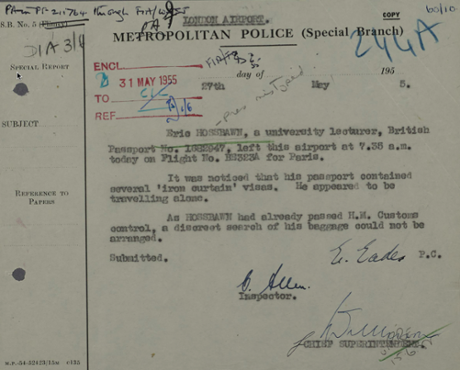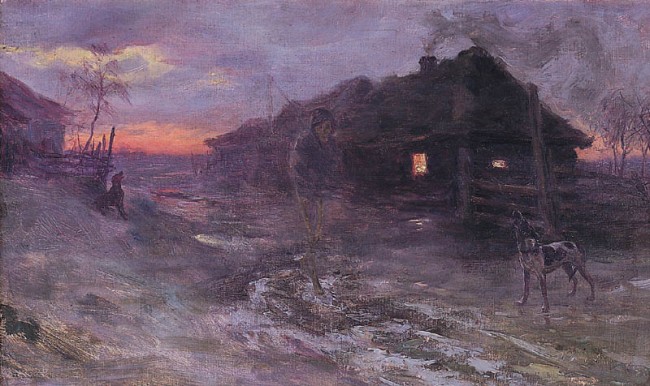English Corner
PwC, the administrator charged with mopping up the European operations of the failed investment bank Lehman Brothers, has said that it might order the destruction of trading data and records once all of the bank’s affairs have been settled.
The possibility that PwC might destroy the data and documents locked down on the systems of Lehman Brothers International Europe, at the moment the plug was pulled on the bank in September 2008, feeds into the fears of historians that records of the financial crisis will be lost.
http://on.ft.com/11hDW9j
Archivists typically select around 5 per cent of organisational records, such as board minutes, public statements and strategy papers, for long-term preservation, according to Vicki Lemieux, an associate professor in archival studies at the University of British Columbia. But, given the repercussions and public importance of the crisis, she says: “The decision on what records are retained shouldn’t be a technocratic function undertaken by archivists alone, without some wider social consultation.”
It is not just academics who want to preserve the records. The European Association for Banking and Financial History, a network of financial institutions, hopes to persuade bank boards to preserve historically significant records. “The first step is to ensure the important parts of the archive are kept. But, in due time [after closure periods of perhaps 30-50 years] we hope the banks will make them accessible to researchers,” says Ines van Dijk, a document specialist at the Dutch central bank, who sits on an EABH committee looking at legislation affecting finance archives.
http://on.ft.com/1oL8oCW
Via Peter Kurilecz
The possibility that PwC might destroy the data and documents locked down on the systems of Lehman Brothers International Europe, at the moment the plug was pulled on the bank in September 2008, feeds into the fears of historians that records of the financial crisis will be lost.
http://on.ft.com/11hDW9j
Archivists typically select around 5 per cent of organisational records, such as board minutes, public statements and strategy papers, for long-term preservation, according to Vicki Lemieux, an associate professor in archival studies at the University of British Columbia. But, given the repercussions and public importance of the crisis, she says: “The decision on what records are retained shouldn’t be a technocratic function undertaken by archivists alone, without some wider social consultation.”
It is not just academics who want to preserve the records. The European Association for Banking and Financial History, a network of financial institutions, hopes to persuade bank boards to preserve historically significant records. “The first step is to ensure the important parts of the archive are kept. But, in due time [after closure periods of perhaps 30-50 years] we hope the banks will make them accessible to researchers,” says Ines van Dijk, a document specialist at the Dutch central bank, who sits on an EABH committee looking at legislation affecting finance archives.
http://on.ft.com/1oL8oCW
Via Peter Kurilecz
KlausGraf - am Mittwoch, 12. November 2014, 23:24 - Rubrik: English Corner
noch kein Kommentar - Kommentar verfassen
http://enriqueta.man.ac.uk/luna/servlet/media/book/showAllPagesThumbnail?mid=Man4MedievalVC~4~4~990378~142729
Via
http://www.medievalists.net/2014/11/07/medieval-english-law-manuscript-digitised/
Via
http://www.medievalists.net/2014/11/07/medieval-english-law-manuscript-digitised/
KlausGraf - am Freitag, 7. November 2014, 17:28 - Rubrik: English Corner
noch kein Kommentar - Kommentar verfassen
http://warburg.sas.ac.uk/home/news/high-court-ruling/
Update:
http://blog.arthistoricum.net/beitrag/2014/11/07/warburg-institute-gerettet-zukunft-gesichert/

Update:
http://blog.arthistoricum.net/beitrag/2014/11/07/warburg-institute-gerettet-zukunft-gesichert/

KlausGraf - am Freitag, 7. November 2014, 17:25 - Rubrik: English Corner
noch kein Kommentar - Kommentar verfassen
http://arxiv.org/abs/1410.8464
"The percentage of documents for which
Google Scholar provides a freely accessible full text link can
be observed in Figure 13. Over 40% of the documents in our sample provided a full text link, and these links are mostly concentrated in the last two decades."
"The percentage of documents for which
Google Scholar provides a freely accessible full text link can
be observed in Figure 13. Over 40% of the documents in our sample provided a full text link, and these links are mostly concentrated in the last two decades."
KlausGraf - am Dienstag, 4. November 2014, 19:40 - Rubrik: English Corner
noch kein Kommentar - Kommentar verfassen
KlausGraf - am Freitag, 31. Oktober 2014, 19:33 - Rubrik: English Corner
noch kein Kommentar - Kommentar verfassen
http://www2.archivists.org/initiatives/askanarchivist-day-october-30
"On October 30, archivists around the country will take to Twitter to respond to questions tweeted with the hashtag #AskAnArchivist. Take this opportunity to engage via your personal and/or institutional Twitter accounts and to respond to questions posed directly to you or more generally to all participants."
"On October 30, archivists around the country will take to Twitter to respond to questions tweeted with the hashtag #AskAnArchivist. Take this opportunity to engage via your personal and/or institutional Twitter accounts and to respond to questions posed directly to you or more generally to all participants."
Right now hundreds of archivists are sitting on Twitter anxiously awaiting #AskAnArchivist Day questions that will never come. #truth
— Evil Archivist (@EvilArchivist) 30. Oktober 2014
KlausGraf - am Donnerstag, 30. Oktober 2014, 19:11 - Rubrik: English Corner
noch kein Kommentar - Kommentar verfassen
http://www.modernlanguagesopen.org/
"Modern Languages Open (MLO) is a platform for the open access dissemination of peer-reviewed scholarship from across the modern languages to a global audience.
Current sections are: Chinese/Asian Languages; French & Francophone; German Studies; Hispanic Studies; Italian; Portuguese & Lusophone; Russian & Eastern European Studies.
Publishing under the imprimatur of a leading university press, MLO marries the editorial expertise and marketing capabilities of a publisher that has been active in the field for many decades with current digital technologies designed to facilitate open access to content under a CC-BY or CC-BY-NC licence. [...]
MLO articles are open access immediately upon publication (Gold), whereby an author publication fee (APC) is charged after acceptance. The normal publication fee of £500/$750 has been discounted to £250/$350 for each published article. Authors who do not have the means to cover the publication fee may request a waiver after acceptance and are encouraged to request more information."
"Modern Languages Open (MLO) is a platform for the open access dissemination of peer-reviewed scholarship from across the modern languages to a global audience.
Current sections are: Chinese/Asian Languages; French & Francophone; German Studies; Hispanic Studies; Italian; Portuguese & Lusophone; Russian & Eastern European Studies.
Publishing under the imprimatur of a leading university press, MLO marries the editorial expertise and marketing capabilities of a publisher that has been active in the field for many decades with current digital technologies designed to facilitate open access to content under a CC-BY or CC-BY-NC licence. [...]
MLO articles are open access immediately upon publication (Gold), whereby an author publication fee (APC) is charged after acceptance. The normal publication fee of £500/$750 has been discounted to £250/$350 for each published article. Authors who do not have the means to cover the publication fee may request a waiver after acceptance and are encouraged to request more information."
KlausGraf - am Mittwoch, 29. Oktober 2014, 11:13 - Rubrik: English Corner
noch kein Kommentar - Kommentar verfassen
"The Ebstorf Map (Wilke, 2001; Kugler, 2007; Wolf, 2004, 2006, 2007, 2009a, b), the largest medieval map of the world whose original has been lost, is not only a geographical map. In the Middle Ages, a map contained mystic, historical and religious motifs. Of central importance is Jesus Christ, who, in the Ebstorf Map, is part of the earth. The Ebstorf Map contains the knowledge of the time of its creation; it can be used for example as an atlas, as a chronicle of the world, or as an illustrated Bible."
Pischke, Gudrun: The Ebstorf Map: tradition and contents of a medieval picture of the world, Hist. Geo Space. Sci., 5, 155-161, doi: http://dx.doi.org/10.5194/hgss-5-155-2014, 2014

Pischke, Gudrun: The Ebstorf Map: tradition and contents of a medieval picture of the world, Hist. Geo Space. Sci., 5, 155-161, doi: http://dx.doi.org/10.5194/hgss-5-155-2014, 2014

KlausGraf - am Sonntag, 26. Oktober 2014, 01:44 - Rubrik: English Corner
noch kein Kommentar - Kommentar verfassen
KlausGraf - am Freitag, 24. Oktober 2014, 20:21 - Rubrik: English Corner
noch kein Kommentar - Kommentar verfassen
http://www.theguardian.com/world/2014/oct/24/mi5-spied-historians-eric-hobsbawm-christopher-hill-secret-files
Eric Hobsbawm and Christopher Hill had phones tapped, correspondence intercepted and friends and wives monitored.

Eric Hobsbawm and Christopher Hill had phones tapped, correspondence intercepted and friends and wives monitored.

KlausGraf - am Freitag, 24. Oktober 2014, 19:46 - Rubrik: English Corner
noch kein Kommentar - Kommentar verfassen
